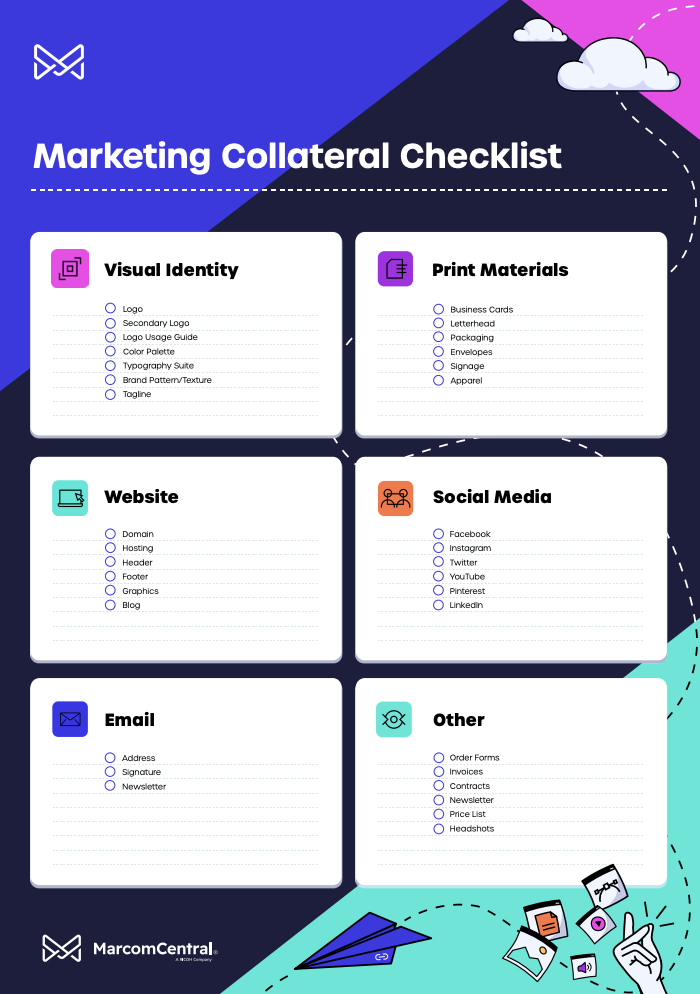Get news, updates, and insights delivered straight to your inbox.
3 Hazards of Sales Creating Their Own Marketing Collateral

We’ve all seen it. That piece of marketing collateral created by a salesperson on the fly.
You know, the one that haunts your marketing nightmares.
The use of an old company logo from 10 years ago. (Where did they even find that!?)
The non-compliant product description that your company’s legal team has highlighted (in red) and attached to an email marked “urgent.”
The lack of any regard for font usage, brand colors, or approved copy (that you worked so hard on).
The clipart. Oh, the horror.
But besides these nightmare-inducing effects of salespeople “going rogue” in the name of content customization, there are real and tangible hazards to the entire organization when Marketing Asset Management rules are disregarded.
Here are three common hazards:
1. Legal action against the company
In highly-regulated industries, companies are put under tremendous pressure to comply with fast-changing rules. Content created by sales is a steward of an organization’s brand, and carries a level of responsibility with it.
Yes, that self-created PowerPoint slide carries the weight of an entire company.
If it contains inappropriate content for a company in your industry, such as a sweepstakes offer in the financial / insurance space, it does more harm than good. This offer would have never been endorsed by the company’s legal and compliance department, for risk of violating industry regulations. It instead opens the door to potential lawsuits, no matter how innocuous the intention may have been.
2. Brand consistency
A brand, as we’ve written before, is the sum of its parts. From tone of voice, facts and figures, down to colors, fonts, and logos – your brand is filled with markers along the way that remind your audience they’re experiencing a brand they know. Over multiple brand interactions, consistency builds trust.
Salespeople often disregard brand compliance. If creating their own content, they often won’t place logos correctly, format them properly, or include the proper tagline. They’ll use incorrect brand colors or font choices, and, yes, many think clip art is kosher.
In reality, in the context of a customer experience, this kind of disjointed piece creates a massive disconnect for the consumer. Without consistency, the idea of a brand’s image, its reputation, and therefore its promise, is threatened.
3. Lost revenue, lost opportunity
According to the American Marketing Association, sales people spend about 30 hours a month creating their own materials – that’s one week, every month that could be spent closing deals. Another study found that workers spend an additional 8 hours every week just searching for the right resources.
With all that time spent hunting information and building content… when are sales people actually selling?
Marketing Asset Management is more than a category of technology – it’s a discipline meant to build efficiencies into what marketing does best, and what distributed sales teams do best.
Nobody asks the CFO to build product, so why do we ask sales teams to do the job of marketing?
By giving Sales access to approved materials, with room for customization to account for personalization, localization, and any other “ization” they need, we are essentially freeing them to do what they do best: sell.
Marketing Asset Management – the road ahead
Faced with the real threat of liability, brand reputation damage, and lost sales productivity, companies are turning to Marketing Asset Management (MAM) to address the hazards of sales-created, unapproved content. Learn the biggest misconceptions about MAM, and how it compares to digital asset management and project management in our eBook.
Note: This is not to say Sales shouldn’t have a strong level of input into the creation of marketing materials. Through internal focus groups, a strong sense of collaboration, two-way communication, and a method of collecting feedback between Marketing and Sales, organizations can foster alignment between these two groups. But, at the end of the day, attention must be paid to how materials are developed, approved, and distributed, to avoid the hazards detailed in this article.
OK, mostly, to avoid the clipart.
You might also like



